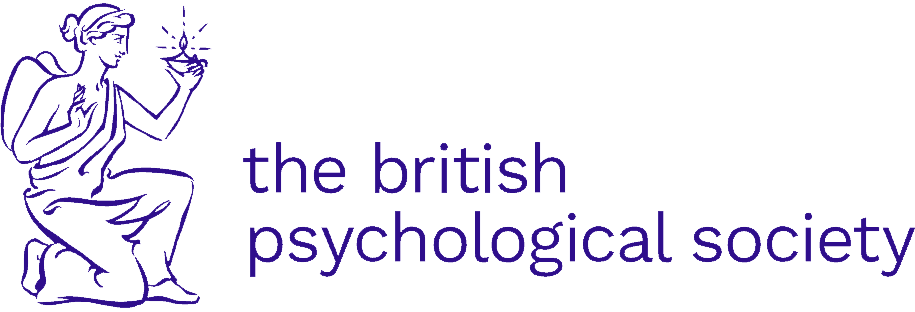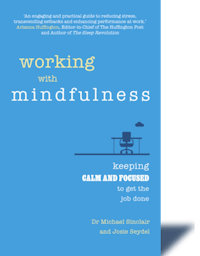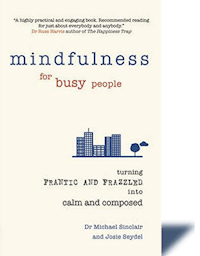Mindful Moments
Mindfulness is a simple yet powerful way to hit pause, refocus, and fully experience the present moment, bringing calm and clarity to your everyday life.
- Receive attentive, informed, and experienced guidance in a 1-to-1 setting
- Learn ways to practice that suit your situation or unique cognitive style
- Ask specific questions and get relevant and meaningful answers
- Discover practical ways to use mindfulness, such as alternatives to sitting ‘closed-eye’ practices
- Gain deeper insight and self-awareness
- Cultivate self-compassion, acceptance, and connection
- Understand more ways to employ mindfulness skills for mental health, increased focus, improved relationships and more
- Improve your performance at work, study or sports
- Explore spirituality and ethics
- Have specific practices designed just for you
- Get support in teaching to others
- To book simply book an 'individual therapy' session on the booking system
My Mindfulness Journey
I was first taught meditation at the age of 10, and despite taking to it, I cannot really say that I had much of a clue what I was doing! I diligently sat twice a day repeating my special mantra, but feeling a bit confused as to why.
Then when I went to Sussex university in the mid-1990s I attended a Buddhist meditation class and first heard of mindfulness. I was taught the classic practice ‘mindfulness of breathing’ (alongside loving-kindness practices and other techniques).
I have practiced mindfulness ever since, for approximately 30 years now.
I never imagined that mindfulness would help me get my first formal role as a psychologist at HMP Bullwood Hall, where I was part of a specialist programme and pilot study introducing DBT (dialectical behavioural therapy) to female offenders at high risk of re-offending, suicide, and self-harm. A core component of DBT is mindfulness, and I was able to help the team and the women with this essential practice. From this point forwards mindfulness has always been integrated into my work. In 2013 I published my first (co-authored) book on mindfulness and have since written further books and articles.
I have also undertaken specific mindfulness teacher training with Martin Aylward and Mark Coleman as well as hours of personal practice and regular retreats.
What is Mindfulness?
Mindfulness originates from Zen Buddhist philosophy, but you will not need to shave your head, wear a saffron robe and eat lentils on a mountain top to practice it (but you might like to try it one day anyway!). It has recently become a very hot topic in western psychology. Currently, there is a lot of excitement and activity around mindfulness in the scientific community and research has proven that mindfulness can dramatically improve our wellbeing and performance in many areas of our modern and busy lives.
You are probably already familiar with the experience of mindfulness – to be fully present and connected to the experience that you are having in any given moment, in an accepting way. Most people have described such an experience when doing vigorous exercise or sitting in a serene setting, say on a beach watching the sunset. In both these scenarios it may be that you have become fully immersed and engaged in your experience of the present moment, even losing track of time as you do so and somehow all your cares and worries seem far, far away. The truth is that the time and any worries that you may have had are still there in the background somewhere, but your experience of your current activity or surroundings has capitulated your attention.
In essence, mindfulness is the practice of cultivating awareness of the present - moment-to moment - by paying attention in a particular way, purposefully and non-judgmentally. The practice of mindfulness strengthens our ability to move from unhealthy ‘autopilot’ states of mind (such as: worry, rumination) that may also lead us to miss out on meaningful experiences in life.
In order to develop these skills, mindfulness utilises specific techniques to ground attention, improve focus, develop insight and increase self- acceptance. Therefore it embraces all emotional states, cognitions (thoughts), physical sensations and ways of behaving. It fosters the development of recognising these aspects of self (emotional, cognitive, physical and behavioural) and allowing ourselves to experience them whilst loosening our identification with these as fixed, permanent states which we must either reject and push away, or strive to maintain whatever the cost. We can all recognise this, perhaps by our attachment to ‘good times’ and aversion to anything that we might perceive to threaten these. Paradoxically, by developing attention and acceptance of the moment and detachment from past experiences, future eventualities or fantasies, we can learn to fully experience our lives (which are, after all, only ever actually ‘here and now’) and to recognise that our frequent non-acceptance of the moment often leads to greater suffering or distress.
These definitions demonstrate the varied cultural, spiritual, and secular interpretations of mindfulness across time and traditions:
1. Buddhism (Theravada):
_"Mindfulness is the clear, non-judgmental awareness of the present moment, cultivated through meditation to bring insight and end suffering."_
(From the earliest teachings of the Buddha)
2. Buddhism (Zen):
_"A state of undivided attention, where the mind is fully present in the here and now, free from distractions."_
(From Japanese Zen traditions)
3. Hinduism:
"The constant awareness of one’s thoughts, emotions, and actions, cultivating self-realisation and control of the mind."
(Part of yoga and meditation practices, rooted in 'dhyana' or deep meditation)
4. Taoism:
"Mindfulness is attuning oneself to the natural flow of life, moving with the Tao (the Way), without forcing or resisting."
(Influenced by Laozi's teachings in the Tao Te Ching)
5. Ancient Greece:
"A practice of self-awareness and reflection, seen as essential for achieving the ideal of self-mastery and wisdom."
(Reflected in Stoic philosophy, particularly by Epictetus and Marcus Aurelius)
6. Judaism (Mussar Movement):
"Mindfulness is the practice of 'yirat shamayim'(awareness of God's presence) and reflection on one's actions and ethics."
(Originating from Jewish ethical teachings)
7. Islam (Sufism):
"A deep presence with Allah through 'muraqabah', an inward awareness that fosters purity of the heart and connection to the divine."
(Found in Sufi meditation practices)
8. Christianity (Eastern Orthodox):
"The stillness of the heart, cultivated through the repetition of the Jesus Prayer, bringing one closer to God’s presence."
(Practised by monks in the Eastern Orthodox tradition)
9. Christianity (Contemplative Prayer):
"A silent focus on God’s love and grace, cultivating an attentive awareness to His presence."
(From Christian contemplative traditions, influenced by mystics like Teresa of Ávila)
10. Jainism:
"The vigilant awareness of the body and mind, observing one’s thoughts and actions to live in harmony with the principle of 'ahimsa' (non-violence)."
11. Confucianism:
"Mindfulness is the conscious practice of *ren* (benevolence) and self-reflection to cultivate moral virtues."
(Rooted in Confucian teachings)
12. Shintoism:
"Mindfulness is the reverent awareness of the interconnectedness of all things and a harmonious alignment with nature and the Kami (spirits)."
13. Secular Mindfulness (Jon Kabat-Zinn):
"Mindfulness is paying attention, on purpose, in the present moment, and non-judgmentally."
(From the development of Mindfulness-Based Stress Reduction in the late 20th century)
14. Tibetan Buddhism:
"The act of being fully present with the mind, while maintaining an open awareness of the transient nature of all phenomena."
(Often practised through 'shamatha' and 'vipassana' meditations)
15. Aboriginal Indigenous Australian Spirituality:
"Awareness of the Dreamtime, the spiritual dimension that connects past, present, and future in a continuous flow of existence."
16. Ancient Egypt:
"A state of mindfulness aligned with 'ma’at', the concept of truth, balance, order, and cosmic harmony."
17. Tibetan Tradition:
"The cultivation of awareness and compassion, recognising the inherent purity of mind and the interconnectedness of all beings."
18. Kabbalah (Jewish Mysticism):
"Mindfulness is the focused awareness of divine energy in every moment, aligning the self with the 'Sefirot' (the divine attributes)."
19. Native American Spirituality:
"The practice of mindfulness is an embodied presence with the Earth, listening deeply to nature’s spirits and living in harmony with them."
20. Yoga (Patanjali’s Yoga Sutras):
"Mindfulness is the practice of 'pratyahara' (withdrawal of the senses) to focus inwardly and reach a state of mental clarity and peace."
(From the classical yoga tradition)
21. Indigenous Maori Beliefs:
"The mindful recognition of the 'wairua' (spirit) that connects all things, fostering deep respect for ancestors, land, and community."
22. Modern Psychology:
"A therapeutic practice that involves paying attention to the present moment, without judgment, to reduce stress and enhance well-being."
23. Zoroastrianism:
"The awareness of 'asha' (truth and order), cultivating mindfulness through good thoughts, words, and deeds."
24. Sikhism:
"Mindfulness is 'simran', the meditative remembrance of God's name, fostering a state of humility, service, and connection to the divine."
25. Western Cognitive-Behavioural Therapy (CBT):
"Mindfulness is the conscious focus on present thoughts, feelings, and sensations, used as a tool for emotional regulation and reducing anxiety."
Mindfulness Breathing Meditation
The mindfulness practice outlined below is all about purposefully focussing your attention on your breath and cultivating a non-judging awareness of your experience in the moment, moment-by-moment for the duration of the practice. It encourages you to let go and ‘unhook’ your attention from any thoughts or feelings, including physical sensations or sounds that may arise in the moment, without getting caught up in them as we usually tend to do. Simply letting any thoughts and/or feelings just come and go, as if they were like clouds drifting by in the sky of your awareness, or like taxi cabs racing around your mind – just remember not to jump into the back of one of them for a lift!
Mindfulness is like going to a ‘mental gym’ where you strengthen and reinforce the metaphorical muscle in your mind that allows you to free and move your attention away from where it has become distracted, back to focusing on the present moment.
Although you will be focussing on your breath in this practice, it is important to remember that this is not a relaxation or breathing exercise, but first and foremost an exercise of your mind. You may very well feel relaxed during and/or after the practice but that relaxed state is simply a pleasant by-product of the mindfulness practice that you about to do.
It is also very important to remember that the purpose of this practice is to simply observe and notice when your attention may have become distracted from focussing on your breath and getting caught up in thoughts and/or feelings but not to expect to control or stop this from happening. Contrary to popular believe, mindfulness is not about “clearing your mind of thoughts” or keeping your mind still indefinitely – to do either would be impossible!
Distraction is an inevitable part of the process and not a sign of failure. The truth is that your mind is like an inquisitive puppy that if left unattended will want to have a sniff and run around – this is only natural and what puppies (and our minds) do! Mindfulness simply involves noticing when your attention has drifted away from where you have focussed it, then unhooking it from the distraction and gently guiding it back to where you would like it to be – in this case focussing on your breath. If you hold such expectations they will soon become obvious to you as you’ll notice yourself becoming more and more frustrated!
Being in awareness versus your thoughts is to experience the most classic definition of the term human being; we are simply just being, being present to our experience right now, without any judgement or opinion about that experience.
The practice below is all about being rather than doing! We spend too much time doing these days, but who is “doing the doing”? – It’s important not to lose touch with this! Just being may feel a bit strange at first, as it is outside of the common norms of common culture – as if there is something weird about stillness, silence, or self-reflection, or not doing!
This mindfulness practice below is simple, obvious and basic, but it’s not easy, it’s a challenging discipline, as the mind is so unruly and highly conditioned – it takes motivation and a radical act of compassion and acceptance towards the experience of yourself! To buffer against stress and to notice general improvements in your mood, wellbeing and your concentration, try this mindful breathing meditation for at least 10 minutes a day:
Mindfulness Breathing Practice
- Sit upright, your spine reasonably straight, not stiff, slightly away from the back of your chair. Allow your shoulders to hang naturally. Rest your hands gently on your lap, your feet apart with soles on the ground. Take a few moments to shuffle comfortably into this position. You may find that your posture changes or droops. If you notice this, just gently realign your position into sitting with a posture of dignity, so you can meet and respect the moment with alertness.
- It’s helpful to close your eyes. If this is uncomfortable, try to rest your gaze on a still object or spot in front of you and relax your eyelids.
- When you are ready bring your attention to your breathing. Become aware of the fact that you are breathing. Simply observe the natural rhythm of your breathing. There is no need to breathe deeply, or to push or pull – allow your breath to take centre stage in your awareness. It’s typical to start thinking about your breathing or have an urge to alter your breathing – just be aware of either and try to simply drop into noticing your body breathing naturally – like a curious and fascinated archaeologists uncovering an ancient find for the very first time, just observe (but don’t think about) your body breathing.
- Notice the sensation of cool air rise into your nostrils as you breathe in and the warmer sensation of breath leave your nostrils/mouth as you breathe out. Just become aware of these sensations and notice how your breath feels in this moment, entering and leaving your body.If you can’t feel these sensations of breath, just be curious and open, simply notice if you can or can’t feel the breath, either is fine. Remember it’s not about the breath; it’s about awareness – without judging, blaming, condemning, forcing, or any agenda.
- Imagine that you have a balloon in your stomach. Each time you breathe in the balloon inflates and each time you breathe out the balloon deflates, notice your stomach rising with the in-breathe and falling with the out-breath. Notice the sensations in and around your stomach as you breathe in and out.You may feel the need to breathe ‘correctly’, don’t worry about breathing in the ‘right’ or ‘wrong’ way – if breathing depended on the conscious mind – you’d be dead already – “oh I forgot to breathe, I was too busy!” Just gently drop into noticing how your body is breathing by focussing on the automatic rise and fall of your stomach.
- Pay attention from the beginning to the end of each in-breath and each out-breath. Keep your awareness present with the breath as if you were riding the waves of your breathing.By now your mind will probably begin to wander away from your breath – that’s just what human minds do! You may hear it commenting, i.e.” this is stupid or boring”, or “this mindfulness thing is nice, I don’t want it to end”. It might drift off into other things, like your ‘to do list’. This is normal and it doesn’t mean that you have failed! When you become bored, restless, distracted by thoughts, feelings or sounds, you can always come back to your breath — use your breath to refocus your attention as if it were an anchor to the present moment and the state of still, calmness.
- No matter how many times your mind wanders from your breath simply notice and guide your attention back to your breathing. Allowing thoughts/feelings to pass-by like clouds in the sky of your awareness. Returning to the present breath and moment each time, observing non-judgmentally, without commentary or preference.It’s common to become frustrated when your attention drifts. Don’t give yourself a hard time, don’t try to banish or push away any thoughts or feelings. You’ll only stress yourself out trying! Simply notice your thinking; touching a thought with awareness is like touching a soap bubble – it vanishes, allowing full attention to return to your breathing.
- Remain present and awake to your experience in the moment, without getting carried away in embracing or rejecting any thoughts or feelings, but knowing that it is natural to like and dislike, so letting go without judgement of either.At points you may become sleepy or even fall asleep, this is common, we tend to nod off when comfy and still! This is probably due to feeling un-rested. Mindfulness itself will help over time, as there is a rest that happens in wakefulness that doesn’t even happen when we’re sleeping. If you notice yourself nodding off, bring your awareness to the fact that you are sleepy. The part of you that knows you’re falling asleep isn’t asleep, and that’s the part that will keep you awake! Gently realign your posture if it has drooped and refocus attention on your breath. If you keep falling asleep do whatever is necessary to keep awake – practise next to an open window or take cold showers before you practise, but don’t blame yourself for falling asleep – you haven’t failed!
- As you end the practise, gently lift your eyelids and expand your awareness to include the sights and sounds that are around you. Take the relaxed sense of calmness, stillness with you throughout the remainder of your day and remember that it is always accessible to you by simply dropping into awareness of your breath.
- It is important to remember that the real meditation practice never comes to an end, it’s your life! Your breathing, sensations, thinking will continue to go on, so the real ‘mediation’ is how you carry yourself in each moment of your life. Awareness is boundless and infinitely available in every moment, in whatever you are doing – it’s always available to you, you don’t need to dedicate specific times to mediate, it’s a way of being, and you can be present at any given time, in whatever you are doing!
It’s easy to forget how to drop into awareness, so it’s good to continue formal practices like this one, as often as you can, ideally for 10 minutes each day. This practice and the words on this page are merely designed to point out how to focus your attention, they are not meant to give you anything else, like a sense of relaxation or wellbeing, just simply reminding you, to rest in awareness.
Just sit, and watch your mind before a task, like a work meeting, or getting the kids dressed, get fully present beforehand, and see what happens, what difference it can make to the experience or outcome of the task at hand. Some of the greatest ideas and creations have come out of stillness, by first taking a step back, opening and waking up, compassionately to our own private, internal experiences.
Initially practise this for 5 minutes twice a day. Aim to increase the duration by 2 or 3 minutes every few days, until you can do this for 15-20 minutes at a time. Even if you only practise this for 1 minute each day, that is better than not practising at all.










